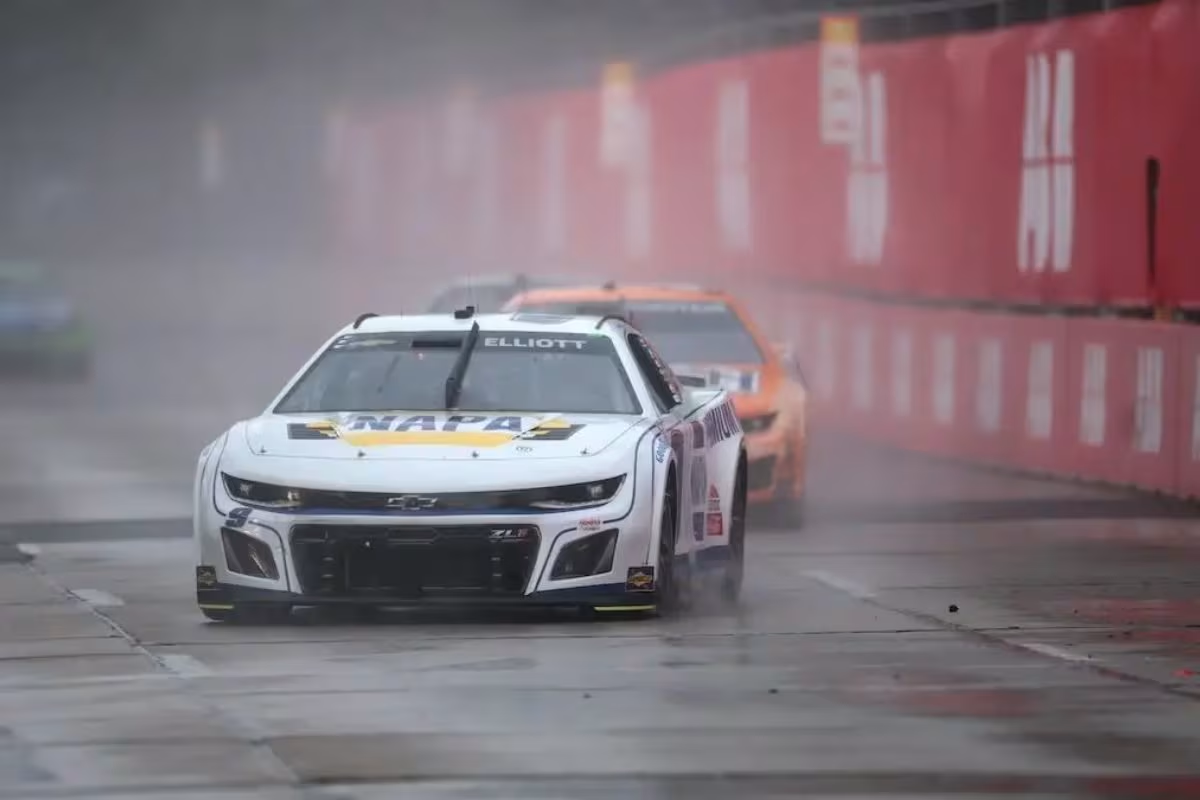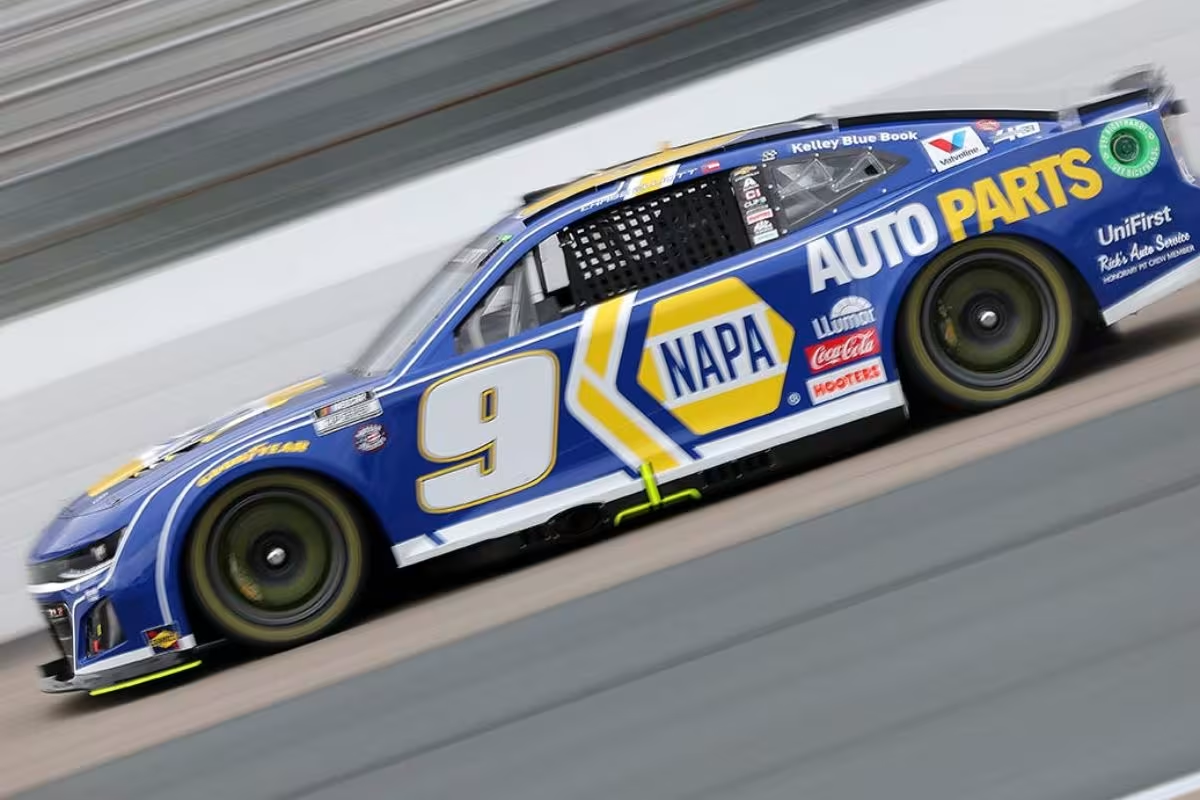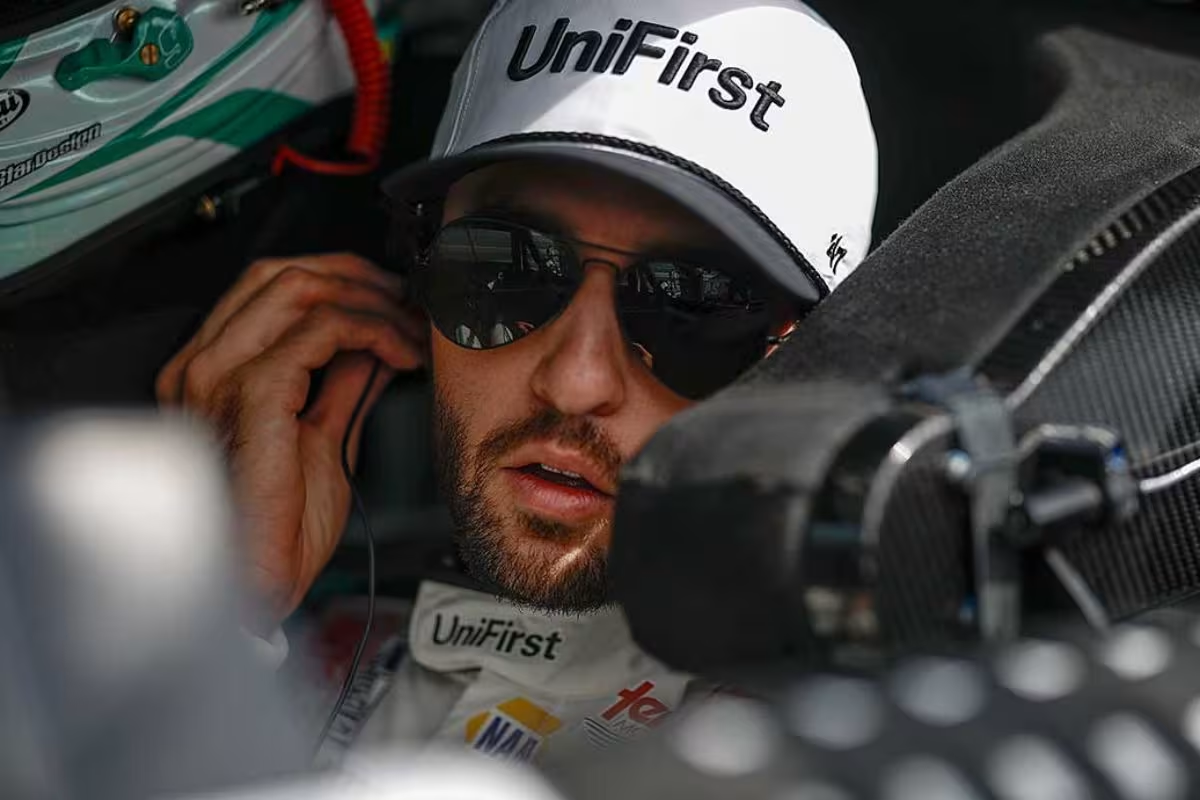Chase Elliott’s Frustrating Kansas Race: Chase Elliott‘s P9 finish at Kansas serves as a clear reminder of how critical moments—such as a single pit stop—can dramatically alter the course of a race. The miscommunication that plagued the No. 9 team not only wasted valuable time but also exposed underlying issues that may affect their playoff ambitions. As the team prepares for the upcoming challenge at Talladega, questions linger about the internal dynamics that contributed to this setback and how they will navigate the friction that occasionally surfaces among drivers.
Key Highlights
- Chase Elliott finished P9 at Kansas, hindered by mechanical issues and tactical errors that limited his potential for a better result.
- A critical pit stop error due to miscommunication caused significant time loss for Elliott’s team during the race.
- Internal team dynamics were strained by the pit stop blunder, highlighting the need for effective communication under pressure.
- Past conflicts with teammate Kyle Larson were addressed, emphasizing the importance of maintaining team harmony during races.
- The upcoming race at Talladega offers Elliott a chance for redemption and improved performance following the setbacks at Kansas.
Race Struggles and Pit Road Issues
Chase Elliott’s performance at Kansas serves as a reminder of the unpredictable nature of racing, particularly when mechanical and tactical missteps emerge at critical moments. From the outset, Elliott faced challenges that would ultimately hinder his chances for a stronger finish. While his Hendrick Motorsports team exhibited resilience, maneuvering through the race field with notable momentum, the specter of recurring pit road issues loomed large.
Despite his determination, the No. 9 team’s pit stops became a focal point of frustration. In a sport where precision and timing are paramount, Elliott’s crew struggled to execute flawless pit strategies, leading to lost time and compromised positions. This was reminiscent of his earlier experiences at Watkins Glen, where non-playoff drivers capitalized on the misfortunes of playoff competitors.
At Kansas, Elliott’s race was marked by a mix of promising drives and disheartening setbacks, particularly during critical pit stop moments that detracted from what could have been a more favorable outcome.
The interplay of race struggles and pit road issues exemplifies the delicate balance between driver skill and team execution. As Elliott pushed through adversity, his inability to maintain momentum due to these tactical blunders highlights a harsh reality in racing: even the most skilled drivers can find themselves at the mercy of mechanical and operational errors.
Issues Facing Playoff Drivers
The challenges confronting playoff drivers during the Kansas race highlight the intricate dynamics of competitive racing, where both individual performance and team execution are put to the test. The opening laps of the Hollywood Kasino 400 set a tone of unpredictability, with Kyle Larson, a leading contender, suffering a blown tire early on. Such incidents underscore the fragility of a playoff driver’s momentum, where a single misstep can greatly impact championship aspirations.
Chase Elliott, despite showcasing resilience by advancing from a 38th-place start, faced persistent obstacles largely stemming from team-level inefficiencies. His post-race remarks revealed a palpable frustration with pit tactics, echoing the sentiments of fellow competitor Denny Hamlin, who also grappled with slow pit stops.
“We just had an uphill battle and it seemed like all day. I really thought our car was pretty good.” – Elliott
#NASCAR … Chase Elliott on the uphill battle the team had to a top-10 finish Sunday at Kansas. pic.twitter.com/rHuHPv52yQ
— Dustin Long (@dustinlong) September 29, 2024
These issues not only hindered their race pace but also demonstrate a broader challenge faced by playoff drivers: the fine line between individual skill and the cohesive performance of the team.
As the playoff stage intensifies, the pressure amplifies the consequences of any miscalculation. A driver’s ability to harness their car’s potential can be rendered moot if the team falters during critical moments.
Internal Team Friction
Internal dynamics within a racing team can greatly influence performance outcomes, especially during high-pressure playoff scenarios. In the case of Chase Elliott’s P9 finish at Kansas, internal team friction appeared to play a vital role in undermining the driver’s potential for victory. Elliott himself acknowledged the detrimental impact of a poor pit stop, which not only cost him valuable track position but also created tension within the team. “We were able to move forward a long way… it was because we had a bad pit,” he remarked, highlighting the delicate balance between operational efficiency and team morale.
“We were able to move forward a long way…it was because we had a bad pit…You know, ultimately puts you in a bad position to lose spots on pit road.” – Elliott
The pit stop blunder exemplified how miscommunication or errors in execution can ripple through a team’s performance, leading to frustration among team members and drivers alike. As Elliott battled with the aftermath of the pit stop, he noted, “It seemed like we would gain a bunch of spots, and then lose a bunch of spots from the pit road thing.” Such inconsistency can foster a sense of disarray, making it challenging for the team to maintain a unified strategy.
“It seemed like we would gain a bunch of spots, and then lose a bunch of spots from the pit road thing…then try to haul the car back up to the top ten. It was nice to at least get that forward.” – Elliott
Moreover, the pressure of the playoffs can exacerbate underlying tensions, as every decision carries considerable weight. The combination of high stakes and internal strife can create a cycle of reconsideration and blame, ultimately detracting from the team’s focus.
As Elliott navigates the complexities of the postseason, addressing these internal fissures will be essential for not only his performance but also the team’s comprehensive success in the championship race.
Previous Conflict with Teammate Kyle Larson
Tensions can often simmer beneath the surface in competitive environments, and this was evident during the spring race of 2023 at Kansas Speedway, where Chase Elliott and teammate Kyle Larson found themselves at odds. The conflict arose amidst a critical juncture in the race, highlighting the complexities of intra-team dynamics within Hendrick Motorsports.
With just 35 laps remaining, both drivers pitted alongside Brad Keselowski. However, the ensuing restart saw Larson make a bold three-wide move, resulting in contact with Elliott’s car that the latter perceived as intentional.
This incident sparked a brief confrontation between the two drivers, characterized by a physical exchange of door-banging, which emphasized the heightened stakes of their positions. While tensions ran high, both drivers ultimately exercised restraint, averting a situation that could have further escalated.
This episode serves as a reminder of the fine line between rivalry and teamwork.
- Competitive Spirit: The pressure to perform can lead to friction, even among teammates.
- Communication Breakdown: Misinterpretations of actions on the track can fuel misunderstandings.
- Team Dynamics: Managing personal rivalries within a team structure requires deft handling.
Apologies and Moving Forward
In the aftermath of the on-track incident at Kansas, both Chase Elliott and Kyle Larson demonstrated a commendable commitment to maintaining team harmony, recognizing the importance of addressing conflicts constructively.
Larson’s post-race reflections conveyed an understanding of the delicate nature of racing dynamics, emphasizing his intent to avoid a more notable collision. His explanation highlighted the split-second decisions drivers must make, reinforcing the notion that racing is often governed by instinct rather than malice. “I hope when he sees the replay, he understands that I didn’t have any space,” Larson stated, which encapsulates the pressures they face on the track.
“Obviously, I made contact with him [Elliott], but I felt like if I didn’t, I was going to clobber the six right in the right front, and I thought the safest bet for all of us was for me to squeeze out a little bit. I understand why he’s mad or was in the moment. I hope when he sees the replay, he understands that I didn’t have any space or not much, just inches. Just a bummer, but I’m glad neither of us got torn up, and we could get a good finish.” – Larson
Elliott’s response further emphasized their professionalism. By denying any intentions of retaliation, he preserved the integrity of their partnership, stating, “That was no message.” This indicates a mutual respect that extends beyond individual races, fundamental for their long-term success as teammates.
Looking ahead, the focus for Elliott and Larson shifts toward their next challenge at Talladega Superspeedway. With a calm demeanor and a top-ten finish behind them, both drivers have the opportunity to channel their energies positively, reinforcing the notion that setbacks can serve as stepping stones.
News in Brief: Chase Elliott’s Frustrating Kansas Race
Chase Elliott’s P9 finish at Kansas serves as a poignant reminder of the vital role teamwork plays in racing success. The pit stop blunder not only hindered his performance but also exposed the vulnerabilities within the No. 9 team during a significant playoff moment. As the team prepares for the upcoming race at Talladega, addressing internal dynamics and enhancing communication will be imperative. The pursuit of redemption rests on the ability to learn from past mistakes and foster a more cohesive unit.
ALSO READ: NASCAR Insider Suggests Chase Elliott Had Winning Speed at Bristol – Is a Comeback on the Horizon?



